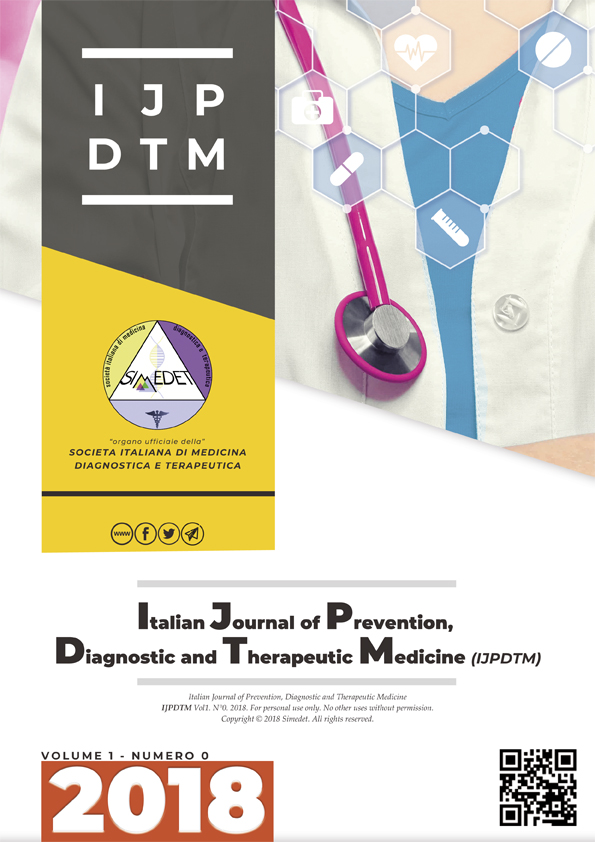Improvement of the analytical process of blood cultures in sepsis and reproduction of tat
Main Article Content
Abstract
This project includes the present project to improve the analytical process of the emocultures, conducted in the UOC of Microbiology and Virology of the University Hospital of Padua, in order to verify the possibility of reducing the TAT of blood cultures carried out following the clinical suspicion of sepsis, using a new automated BacT / ALERT® VIRTUO ™ (Biomerieux) microbial detection system compared to the traditional BacT / ALERT® 3D (Biomerieux) method, which in addition to demonstrating greater functionality in the preanalytic phase, should above all highlight the ability to identify more quickly the
pathogens of the blood infections.
Downloads
Article Details

This work is licensed under a Creative Commons Attribution-NonCommercial-NoDerivatives 4.0 International License.
References
XXXVII Congresso Nazionale AMCLI - Infezioni del torrente
circolatorio. Stresa, 5-8 ottobre 2008
Clinical and Laboratory Standards Institute (CLSI), Principles
and Procedures for Blood Cultures, Approved Guidelines. CLSI M47-A
( ISBN 1-56238-641-7)
Garner JS, Jarvis WR, Emori TG, Horan TC, Hughes JM.
CDC definitions for nosocomial infections. In: Olmsted RN, ed.APIC
infection control and applied epidemiology: principles and practice. St.
Louis:Mosby, 1996:A1–20.
Seifert H.The clinical importance of microbiological findings in
the diagnosis and management of bloodstream infections. Clin Infect Dis.
May 15; 48 Suppl 4:S238-45.
Urbano P. l’emocoltura http: //www.ao.careggi.toscana.it/
microbiologia.htm,2009
Garner JS, Jarvis WR, Emori TG, Horan TC, Hughes JM.
CDC definitions for nosocomial infections. In: Olmsted RN, ed.APIC
infection control and applied epidemiology: principles and practice. St.
Louis:Mosby, 1996:A1–20.
Clinical Practice guidelines for the diagnosis and management
of intravascular catheter-related infection: 2009 Update by the Infectious
Diseases Society of America
Horan T.C. et al. CDC/NHSN Surveillance definition of health
care-associated infection and criteria for specific types of infections in the
acute care setting. AJIC: American Journal of Infection Control, june 2008
(Vol.36, Issue 5, pages 309-332)
Surviving SepsisCampaign: International guidelines for
management of severe sepsis and septic shock. Intensive Care Med 2013;
(2): 165-228 and Crit Care Med 2013;41(2): 580-637
Andrew Lee et al. Detection of Bloodstream infections in
Adults: How many blood cultures are needed? J. Clin. Microbiol. 2007,
(11):3546.
Baron E J et al. A Guide to Utilization of the Microbiology
Laboratory for Diagnosis of Infectious Diseases: 2013 Recommendations
by the Infectious Diseases Society of America (IDSA) and the American
Society for Microbiology (ASM)
Doern GV1 et al. Four-day incubation period for blood
culture bottles processed with the Difco ESP blood culture system. J Clin
Microbiol. 1997 May;35(5):1290-2.
Soloaga R1 et al. Utility of prolonged incubation and terminal
subcultures of blood cultures from immunocompromised patients. Argent
Microbiol. 2001 Jul-Sep;33(3):177-81
www.biomerieux.it/diagnostica-clinica/prodotti-e-servizi

